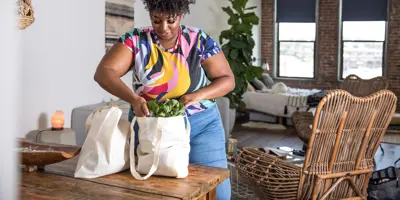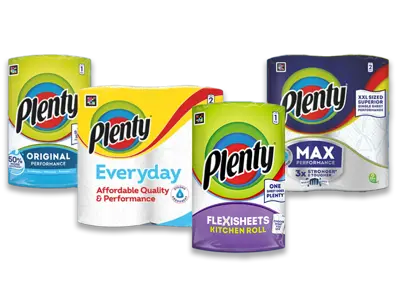1 person found this helpful
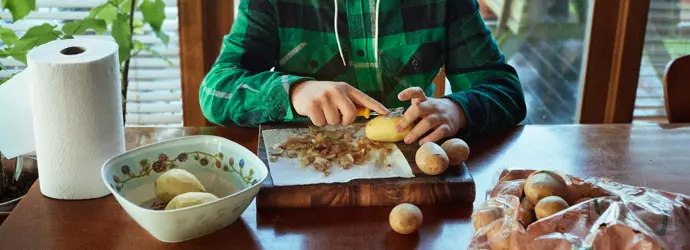
If you’ve ever asked, “how does composting work?”, this is the article for you! We’ll answer the most common questions, from “what does composting mean?" to "is composting good for the environment?” We’ll even help you figure out what to do with compost and what you should and shouldn’t compost, as well as taking a look at the different types of composting. Turn those brown, squidgy apple cores that your very organised little one has neatly tidied away under the sofa after gobbling up the juicy, crunchy bits, into nutrient-rich material to help your soil!
What is composting?
Let’s start with the key questions: what is composting and what does composting do, exactly? Remember that graveyard of apple cores sprouting arms and legs under the sofa? In simple terms, composting is the process of organic material naturally decomposing, resulting in nutrient-rich matter that feeds the soil.1
Composting is already a firm favourite among avid gardeners and the green-fingered alike. But it’s not difficult and you don’t need to be a pro gardener to use it! Almost anyone can roll up their sleeves, get stuck into the gloop and give it a go themselves. With a little know-how, the right ingredients and a bit of space, you can start diverting some waste from landfill and turn it into something productive – in your own home!
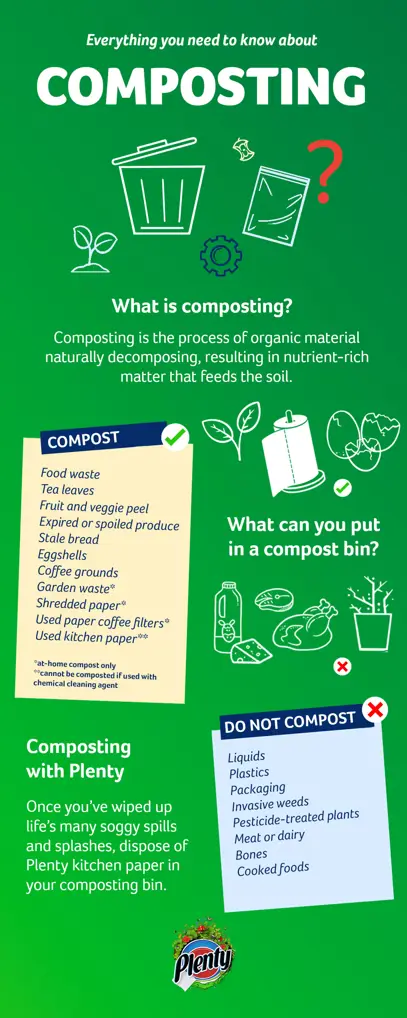
How does a compost bin work?
When you combine the right kind of materials and keep them in the right conditions, microorganisms get to work amongst all that organic matter and convert it into compost. Simple.
Compost heaps need the right levels of air, light, temperature and water for the bacteria and fungi to be able to do their thing. They should be placed in a shady area, kept moist in dry weather, and turned regularly to get enough air. Good compost bins help retain moisture and warmth, keep the rain out, let air in, and allow drainage.3
As we’ve established, a few things have to go right for the composting process to happen... So, how does composting work?
- Material selection: A successful compost bin requires a mix of "green" (nitrogen-rich) and "brown" (carbon-rich) materials. The green materials provide nitrogen and moisture, while the brown materials contribute carbon and help with aeration.1,2
- Layering: Begin by placing woody materials at the bottom to aid in air circulation. Layer green and brown materials alternately, creating a balanced composition. The ideal depth is at least 30cm.
- Decomposition: Microorganisms, such as bacteria and fungi, break down the organic matter over time. For these microorganisms to thrive, the compost pile needs proper aeration, moisture, and temperature. Regularly turning the pile introduces oxygen and ensures even decomposition.3
- Temperature regulation: As decomposition occurs, the compost pile heats up. Temperature – and heat – play an important role in composting. It’s recommended that compost piles are kept in the region of 40.5°C to 65.5°C. This heat helps accelerate the breakdown process and can even kill off harmful pathogens and weed seeds.4 Keeping compost at this temperature isn’t as hard as it sounds – just avoid extreme temperatures by keeping the compost somewhere shady!
- Moisture management: The compost pile should be kept moist, but not soggy. Watering during dry periods helps maintain optimal moisture levels for microbial activity.5
- Turning and aeration: Regularly turning the compost pile with a fork or shovel aerates it, promoting the circulation of oxygen. Proper aeration prevents unpleasant odours and ensures efficient decomposition.6
- Maturation: Over time, the compost will mature into a dark, crumbly material with an earthy aroma. This indicates that the organic matter has transformed into nutrient-rich compost suitable for enriching soil.
What is the composting process?
We’ve covered questions like "what does composting mean?" and “how does composting work?”, but what is the composting process? Learning a little bit more about how composting works and its process will help you become a better composter in the long-run! So, here’s a step-by-step guide:
- Place a reasonably equal combination of ‘green’ material (which is soft and nitrogen-rich) and ‘brown’ material (which is dry and carbon-rich). Scroll for our quick list of suggested green and brown materials.
- Put more woody material at the bottom (to help with air circulation), followed by layers of different materials, to a depth of at least 30cm. Avoid having one dominant material. Fill the compost bin as much as you can.
- Regularly add to this pile, until the bin is full.
- The pile will begin to heat up and start decomposing.
- After a couple of weeks, when it starts cooling, mix the contents of the heap thoroughly by turning with a fork. If it’s drying out, add water.
- Turn regularly (at least every month) to air it.
- The compost will be ready when the heap has an earthy/damp woodland smell, is dark brown, has a crumbly texture like soil, and is about half its original size. This might be as quick as two to four months in warm conditions but can take as long as a year or sometimes longer – patience helps!
Choose the composting method that fits your lifestyle and goals best, and remember, they all contribute to reducing waste and enriching soil!
Why not check out our dedicated guide for a full breakdown of exactly what you can and can’t compost? Confused about the difference between compostable vs biodegradability? We’ve got you covered there, too.
What is compost used for?
You know what the composting process is, but what is compost used for? Well, we hope you’ve been paying attention so far – it's used for the soil! Compost – whether homemade or bought readymade – is used either in place of or in combination with fertiliser to nourish the soil for nearly everything you can grow!
You know what to do with compost, but what are the benefits of composting? Why is composting actually a good idea?
4 benefits of composting
We now know the ins and outs of composting, but what does composting do for the planet? Is composting good for the environment? One Green Planet outlines many benefits of composting, and these include helping to produce less pollution, helping soil, and helping to reduce the amount of chemicals used to grow crops.7 Let’s take a closer look at some of the benefits of composting:
- It allows plant matter to decompose with less pollution. First on our list is that composting helps keep plant matter in an appropriate place. When it goes to landfills, it needlessly fills them up, and also creates more pollution. That’s because vegetable matter doesn’t decay cleanly in an airless landfill environment. It produces methane, a greenhouse gas that negatively contributes to climate change.8
- It is beneficial for the soil. By composting, not only are you reducing the amount of household waste that might end up in a landfill, you’re also helping to feed and improve soil, allowing it retain moisture. Composting helps vegetables and plants to grow and withstand common diseases. The Compost Research and Education Foundation (CREF) organises an annual International Compost Awareness Week, and the theme for 2022 – ‘Recipe for Regeneration: Compost’ – highlights this point.9 Composting can also produce less carbon in the atmosphere, because the bacteria that compost can provide help enrich the quality of the soil while also trapping carbon in the soil through photosynthesis.10 It’s a bit technical, but in short, it’s great!
- It can be used in place of chemical fertiliser. Thirdly, compost can be used on cropland instead of chemical fertilisers, which is good, as some fertilisers can disrupt the work bacteria do in the soil.11 Certain chemical fertilisers can also be harmful to humans as well as the environment.11 In addition to cropland, compost can also be used on your own garden instead of fertiliser, meaning you save money as well as benefiting from the environmental advantages of compost.
- Composting is fun and satisfying! Not only is composting a great way to divert waste from landfills and give your garden a chance to grow, it’s also extremely satisfying! After all, what could be more satisfying than watching something destined for landfill transform into a useful material right in front of your eyes? Plus, getting the kids involved is a fun way to teach them about sustainable practices! For more tips on how to educate your little ones on sustainability, check out some of our plastic pollution facts for kids.
How Plenty is committed to helping the environment
At Plenty, we’re working towards reducing our environmental impact. We’re committed to finding ways to be sustainable in the key areas of our activity, with innovations in product, packaging, production and delivery. With the use of recycled plastic, for example, we’ve reduced the carbon footprint of our packaging. In doing so – and with the help of other initiatives – we’re committed to reducing our greenhouse gas emissions by 25% by 2030, from a 2016 base-year.
We're also working towards reducing the carbon footprint of our packaging* further, whilst committing to a goal of 100% of our packaging being recyclable and the use of 85% renewable or recycled materials in our packaging by 2025. These are just some of the ways we’re doing our bit to lessen our impact on the environment. Why not check out some of our other sustainability initiatives?
Tip
Did you know that Plenty kitchen roll sheets are now compostable?** That’s right! Whenever you wipe up messes with Plenty Original, you can now toss them right into your compost bin. Now life’s little messes can benefit your garden!
With all this information, you can now feel confident that you know what is composting, the benefits of composting – both to your garden and the planet - and how you can start your own compost heap. So, get those sleeves rolled up and start making your compost today!
Want to know more about Plenty’s compostable kitchen roll sheets? Check out the answers to your frequently asked questions.
*Carbon footprint reduction of the packaging due to use of recycled plastics vs. our previous packaging made with fossil-based plastics, based on Life Cycle Assessments conducted by Essity and verified by third party.
**Plenty kitchen towels are certified as home and industrially compostable according to NF T 50-800 and EN14995.
Sources:
2 Gardening Know How, Understanding The Browns and Greens Mix for Compost
3 Royal Horticultural Society, Composting
4 OLUS, Basic Science of Composting
5 Help Me Compost, How wet should compost be?
6 Indiana University, Composting at home: How to reduce your waste and make your own fertilizer
7 One Green Planet, 5 Reasons Why Composting is the Greenest Thing You Can Do
9 Compost Research and Education Foundation, International Compost Awareness Week
10 Institute of the Environment and Sustainability – UCLA, Carbon sequestration through compost
12 Drug Watcher, Harmful Effects of Chemical Fertilizers on Human Health
Related articles
Clean and green! 10 tips for eco-friendly cleaning
From baking soda and lemon cleaning methods to a surprising kitchen cupboard treatment for mould, read our sustainable cleaning products ideas for your home!
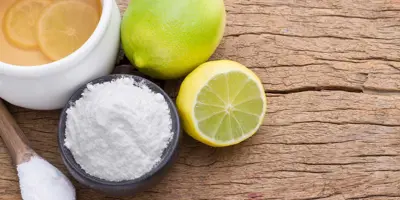
7 steps to create a DIY cardboard castle at home
Learn how to make a cardboard castle to fit their favourite interests. Find step-by-step cardboard castle DIY instructions and theme ideas here.
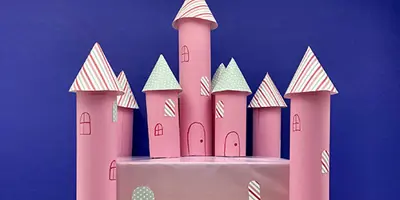
Reducing waste at home: The easy way
Find out how to save energy at home and reduce food waste with our top tips. Read on for handy pointers for making your household more eco-friendly.
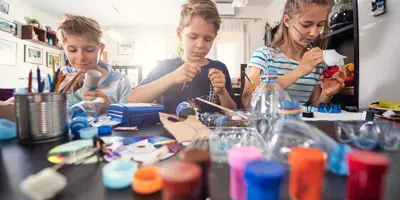
6 tips on how to save water at home
Learn how to save water at home. Find five easy ways to conserve water, so you can bring down your waste and make some clever savings in the process, here.

What does biodegradable mean and what is non-biodegradable?
Biodegradable and non-biodegradable? What do they mean?! Don’t fret, discover the definitions and biodegradable materials to become an eco-friendly pro!
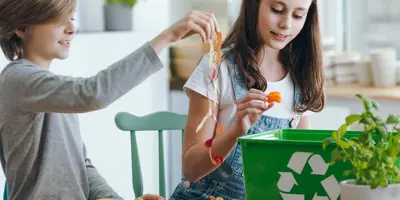
How to lead a sustainable lifestyle in 5 key ways
Learn how to live more sustainably with our tips on diet, methods of transport, energy consumption and product choices. Find sustainable living examples here.
